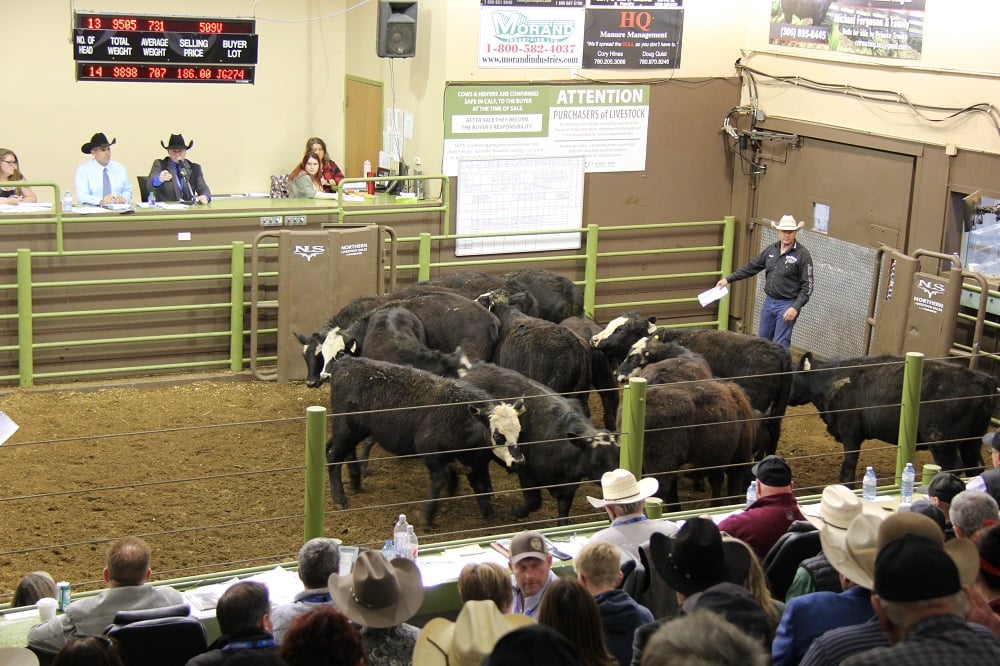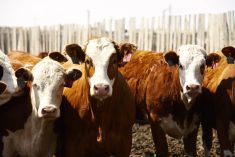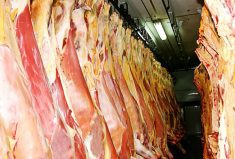Calving season is coming to an end for many cow-calf producers and it is that time of year when I receive inquiries regarding the marketing strategy for this recent calf crop. At the same time, cow-calf pair prices have started to reflect the present value of future earnings and producers are asking if current values are sustainable moving forward. The old question when to expand the herd is coming to the forefront now that there appears to be some profitability at the grassroutes level. The two major factors influencing the price of feeder cattle are feed grain prices and the forecasted price of fed cattle. Therefore, it is important that cow-calf producers have a strong understanding of these influences looking six to 12 months forward.
Read Also

Cattle Market Summary
Break-evens, cow and calf prices, plus market summaries courtesy of Canfax and Beef Farmers of Ontario. Cost of Production May…
Fed-cattle prices have been trading near historical highs as the market adjusts to rising consumer income levels. The North American economy continues to expand after one of the largest recessions in history. Looking at past history, the most profitable period in the cattle complex is at the bottom and middle of the economic expansionary phase. We are now in the middle of the expansion period but also have to consider the following factors.
- More Canadian Cattlemen: The Markets with Debbie McMillin
The U.S. unemployment rate stood at 6.3 per cent this past April and 25 states reported the rate under six per cent. There are now 145.7 million Americans working compared to 143.5 during April of 2013. This is a huge factor for the beef complex as income levels increased for 2.2 million Americans. We all remember U.S. unemployment was at 10 per cent in 2009. Looking forward, by June of 2015, we can expect the unemployment rate to drop to five per cent which will continue to improve the demand equation. Housing starts continue to increase given the lower interest rate environment which is a strong signal of expansion. Consumer confidence continues to improve which tells us that Americans are feeling more confident about their future earning potential and the prospects for the overall economy. These are all factors that drive disposable income and spending habits for the average consumer.
Looking at the supply equation, we are probably at the bottom end of the contraction and can count on larger beef and pork production during 2015. Record-high prices encourage production and while it may take a year before the additional calf crop comes on the market, beef production will likely be similar in 2015 as in 2014. Consider the following projection. A year-over-year decrease of 1.4 billion pounds is expected for 2014 U.S. beef production; however, for 2015, beef production will likely finish marginally higher. High prices tend to bring out feeder cattle from the back range is an old saying in the cattle industry. For example in Canada, Alberta and Saskatchewan feedlot inventories have been running eight to 10 per cent higher throughout the winter while exports to the U.S. are also sharply higher than last year.
Fed-cattle prices have probably reached their peak this last spring and the upside is now defined for the next 12-month period. We could see a marginal increase in demand but the market has factored in the lower supply situation.
In the past two issues, I’ve discussed the barley and corn price outlook. Canadian barley prices in southern Alberta have been percolating higher due to a year-over-year increase in domestic feed usage and the grain industry is factoring in a 10 per cent decline in acreage. U.S. corn acreage is projected to be down four per cent and the market cannot afford a crop problem or adverse weather during the growing season. U.S. ending stocks have been trimmed for 2013-14 and if yields are below trend, the market could strengthen during the 2014-15 crop year. I’m forecasting a year-over-year increase in average barley prices for 2014-15 which will increase the cost-per-pound gain for the finishing feedlot.
In conclusion, feedlots tend to bid up the price of feeder cattle until feeding margins become quite snug over the long run.The upside in fed-cattle prices has likely been defined and potential for rising feed grain prices will temper the upside in the feeder market. Cow-calf producers who didn’t expand their herds earlier are running a higher-risk scenario buying cow-calf pairs at historical highs. I feel the upside in feeder cattle prices is limited from current levels. When forecasting upcoming revenue streams, producers should probably be conservative and factor similar prices to 2014 or a marginal year-over-year decline in feeder cattle values. c
Gerald Klassen analyzes markets in Winnipeg and also maintains an interest in the family feedlot in southern Alberta. He can be reached at [email protected].
















